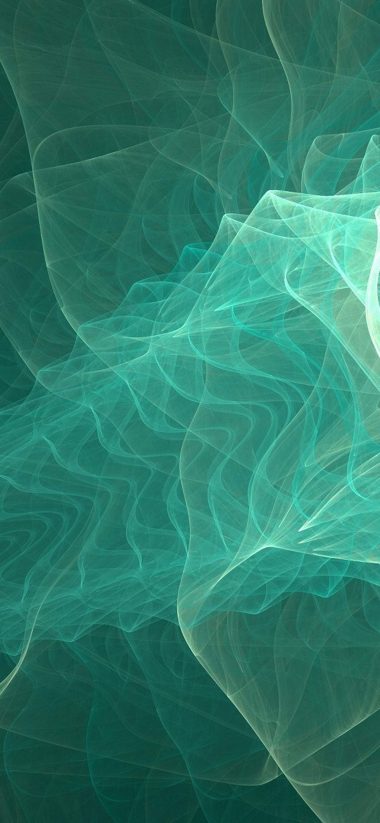- No Available Windows On Macbook Pro
- Installing Windows 10 On A Macbook Pro
- Windows On Macbook Pro 13
- Windows On Macbook Pro Touchpad
This worked for me; it might not work for you. Remember I'm just same random guy on the internet so I take no responsibility for anything that happens to your machine. Okay?
- For the past two weeks, my MacBook Pro has been a Windows 10 ONLY machine. Here's my experience turning my Apple laptop into a bonafide PC. Pick Up an Apple.
- I recently installed Windows 10 on my Macbook pro (Mid 2012 version) and everything works fine except the Audio. Basically as far as my limited knowledge goes in this, when you install a Windows 10 on your Mac using BootCamp (BC), it installs all the drivers on your Windows on the first boot and it did. But I am unable to hear any audio.
The Problem
Aug 05, 2011 You can run Windows on a Mac. That's a big selling point for Apple, which gives this feature a marquee position on its 'Why You'll Love a Mac' page. Apple pitches it as the way to run 'specialty.
As yet (5th Aug 2015) there's no official support from Apple for Windows 10 running through Boot Camp. So, when I upgraded from Windows 8.1 to 10, I was expecting there to be a couple of issues. One of these was a lack of Bluetooth. Also getting the fn key working.
But, it turns out to be easy to fix.
Get the Driver
The driver for Windows 8.1 works with 10, so you just need to grab that.
Go to https://support.apple.com/en-us/HT204048 and find your machine in the list. You want to look for the zip file download of the Boot Camp Assistant software.
For me, it was this one:
Download that file (it's pretty big – 882Mb for my one) and unzip that once done.
Install the Driver
Inside the unpacked folder, go into the BootCamp folder and then into the $WinPEDriver$ folder under that.
The driver needs to be installed via device manager so just confirm that the AppleBluetoothBroadcom64 folder is there for now.
In Windows, open up device manager (the easiest way to do this is just hit the Windows key and type ‘device manager' – it'll be the first result).

Expand other devices and you should see an unknown device.

Expand other devices and you should see an unknown device.
Right click it and select Update driver software.
Chose the second option on the pop up to browse your computer for the driver software.
Browse to the $WinPEDriver$ from your downloads and select that. Make sure Include subfolders is checked and then click Next and Windows will install the Bluetooth driver for your Mac Book.
Most people who buy Macs are doing it to run OS X, but you'd be surprised by the number of comments and e-mails we get in response to Mac reviews asking about how Windows runs on the hardware. Since Apple made the Intel switch and introduced its Boot Camp software in 2006, there's been a small but significant group of people who have chosen to use Apple's hardware to run Microsoft's software, either as a secondary or primary operating system.
Because the new MacBook is an entirely new product rather than a straightforward refresh, we spent some time installing Windows and taking it for a spin. If you've used Boot Camp before, there aren't many surprises. But there are still things you need to know if you intend to buy a MacBook to run Windows.
Installation and display differences
The actual process of creating a Boot Camp install drive and downloading your Windows drivers hasn't changed at all. Get a Windows 8.1 ISO on your MacBook somehow, launch the Boot Camp Assistant app from the Utilities folder, hook up a USB drive that's 8GB or greater in capacity, decide how much space you want to dedicate to the Windows partition, and let it do its thing.
The one difference, of course, is the whole port thing. USB Type-C flash drives are still unicorns, so at a bare minimum you'll want Apple's $19 USB Type-C to Type-A adapter or a generic equivalent. Make sure your laptop is fully charged before you begin the whole process, but, using a USB 3.0 flash drive, we had no trouble creating a Boot Camp install disk, rebooting and installing Windows, and installing the Boot Camp support software and drivers with battery life to spare.
Update: You may run into an issue where the MacBook won't boot from the USB drive after running the Boot Camp Assistant, or where it's not selectable as a startup target in the Startup Disk preference pane. If this happens, hold down the Option key as the computer boots and select the USB drive from the list (it may show up as 'EFI Boot').
The first time you boot to the Windows desktop after everything is installed, you'll notice that everything onscreen is too small—for whatever reason, the automatic screen detection and UI scaling that happens on Windows PCs doesn't happen here. It's not a difficult problem to fix, though. Just right-click the desktop, go to Screen Resolution, click 'make text and other items larger or smaller,' and choose a scaling option you find comfortable. The 150 percent scaling level looked the best to our eyes, though some of you will probably be able to get by at 125 percent, too.
That's one advantage that Windows has over OS X: no matter which scaling percentage you're using, the desktop is still being drawn at the panel's native 2304×1440 resolution, so you don't need to deal with worsening GPU performance as you make items on the screen larger and smaller. The downside is that software support is still spotty. Microsoft's apps and major third-party programs like Firefox and Chrome all look good, and Adobe is adding support for high-density Windows screens as an 'experimental feature.'
But in other apps, especially older ones or those from smaller teams, you'll still be dealing with inconsistency issues. Sometimes apps will look tiny, sometimes they'll be the right size but they'll be blurry, sometimes most of the window will look fine but there will be individual buttons or sliders that don't render correctly. OS X apps that don't support Retina mode have become relatively rare, but that's not quite the case for Windows yet.
Other software quirks
The level of support Apple offers for Windows has never been spectacular, and Boot Camp continues to cover the basics and not much else. The Boot Camp control panel lets you switch the default boot partition, adjust how the function keys work, and toggle basic trackpad features like right-clicking and tap-to-click. Drivers exist for (most) of the internal hardware. That's pretty much all you get.
No Available Windows On Macbook Pro
There are no special controls in the Boot Camp control panel for the Force Touch trackpad, including settings to change the firmness of the click. Windows seems to use the trackpad's default firmness setting, and you can't change that in Windows itself (nor will any settings carry over from OS X). Windows 8.1's native trackpad gestures are unsupported, which means that Windows 10's more powerful gestures probably won't be, either.
Apple's trackpads, always paragons of accuracy while in OS X, become merely above average in Windows. Finger tracking is fine, but two-finger scrolling is tweaky and usually scrolls too quickly or abruptly. Clicking and dragging sometimes takes a couple of tries. This should all sound familiar if you've used Boot Camp on a MacBook before. The Force Touch trackpad neither resolves nor introduces new problems.
Another complaint: Bluetooth is completely non-functional. The adapter doesn't show up in the Device Manager or in the PC Settings screen, nor do accessories that you've paired in OS X continue to work when you reboot into Windows. This is more than likely to be an easily fixable driver problem, it's just not fixed now.
And, finally, be careful about installing new, not-provided-by-Apple drivers to solve problems. The Boot Camp package installs a fairly recent version of Intel's integrated graphics driver, but there's already a newer version available through Windows Update and the Intel support site. After installing it, though, we'd run into major graphics corruption issues that could only be solved by restarting the computer or rolling back to the older driver.
Performance and battery life
Installing Windows 10 On A Macbook Pro
Though the hardware is the same, Windows and OS X are different enough to cause some significant differences in performance and battery life. The general rule of thumb is that graphics performance is better in Windows, since OS X is slow to pick up support for new OpenGL versions and drivers (we explored this phenomenon more fully in our review of the 2013 Mac Pro). On the flip side, battery life is usually worse in Windows, something generally attributed to Apple's tighter integration between hardware and software. Our tests bear both of these observations out.
These charts exist just for the sake of comparing the MacBook running Windows to the MacBook running OS X; other comparisons can be found in our main MacBook review.
The CPU scores are basically a wash. Windows is a smidge slower in Geekbench and a little faster in Cinebench but not drastically so in either case. The graphics benchmarks show Windows firmly ahead of OS X, sometimes by just a bit (GFXBench T-Rex test) and sometimes by quite a lot (GFXBench Manhattan).
As best as we can tell, the MacBook supports the same external display configurations in Windows 8.1 as it does in OS X. We couldn't get our Dell P2415Q to output 4K at 60Hz over SST, even with the internal display disabled.
The MacBook loses around an hour and a half of battery life in our Wi-Fi Web browsing test, which loops a set of pages continuously until the laptop dies (we use the platform's default browser for this, so you're looking at Safari results in OS X and Internet Explorer results in Windows). In the WebGL test, oddly, Windows actually gains around an hour of battery life relative to the MacBook. It's possible that the same changes that help GPU performance in Windows also improve its power consumption under load, but it's difficult to say.
Windows On Macbook Pro 13
Buying a MacBook primarily to run Windows isn't the worst idea you could possibly have—most of the hardware's virtues and shortcomings remain the same regardless of the operating system you're running. There are specific problems—non-functional Bluetooth, barebones trackpad controls—that we'd like to see fixed in subsequent driver releases, but it's mostly fine as-is.
Windows On Macbook Pro Touchpad
That said, the PC OEMs are doing well enough these days that grabbing a Mac isn't really your best option if you don't need OS X. Several of you pointed out Asus' UX305, a similarly slim PC available for less money (though you need to buy several upgrades to bring it to parity with the MacBook). Dell's XPS 13 is a favorite if you want more performance and don't mind a fan. Apple magic keyboard with numeric keypad review. The MacBook is still an appealing option if you want one machine that runs everything, but for the few of you who like buying Apple hardware to run Microsoft software, there are other devices you ought to look at first.

